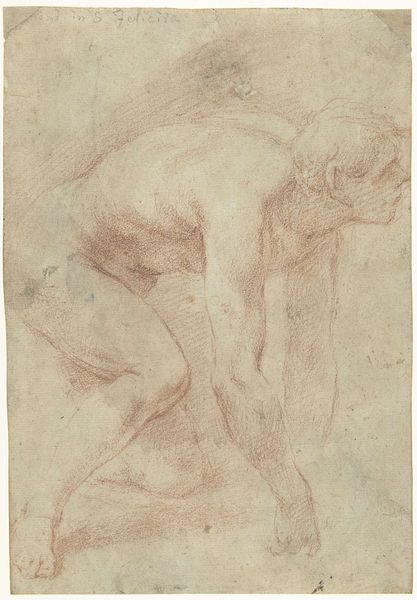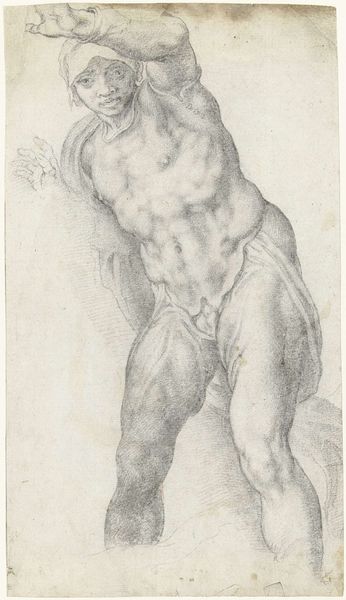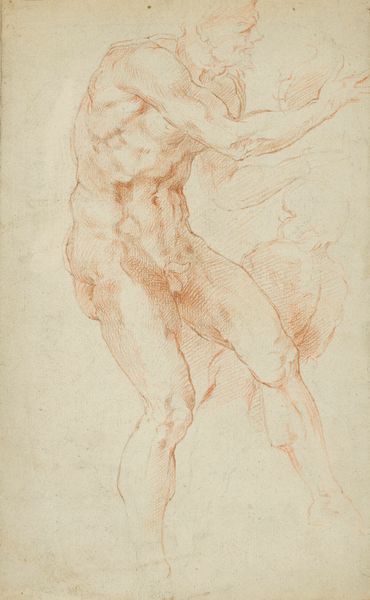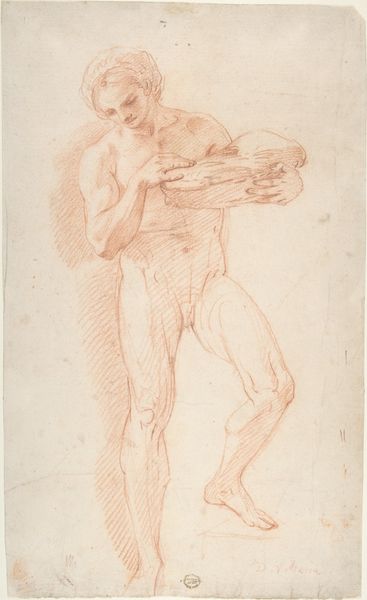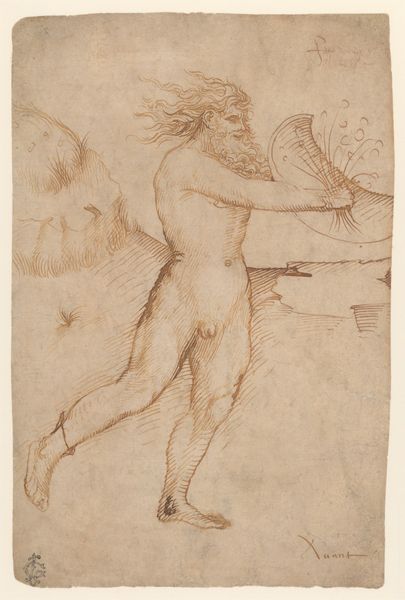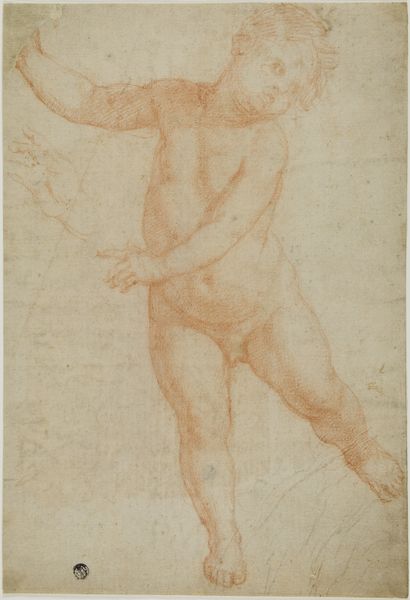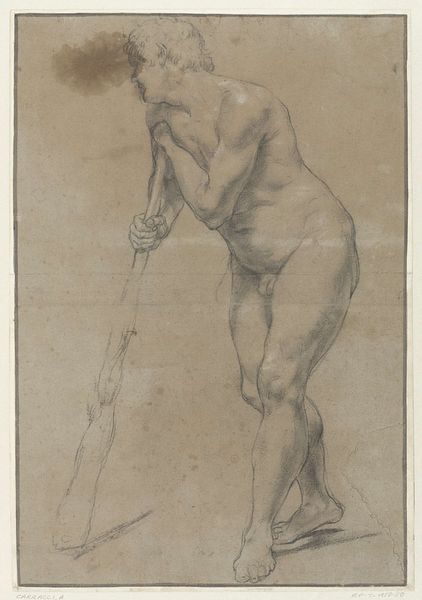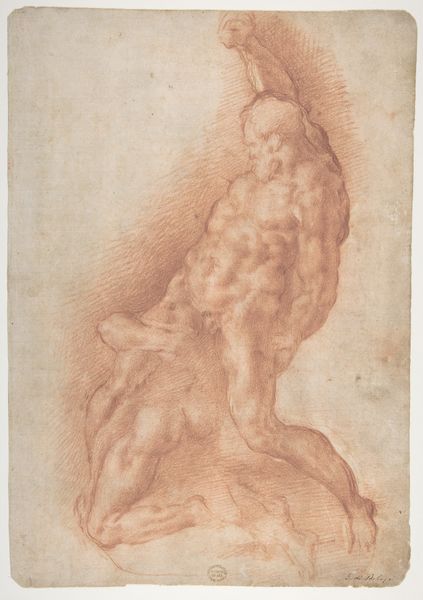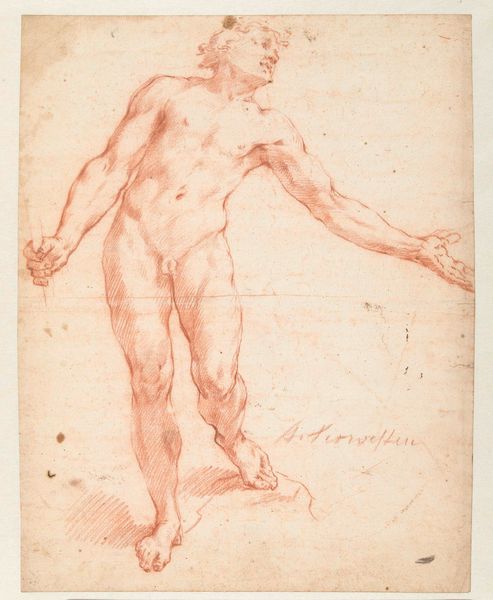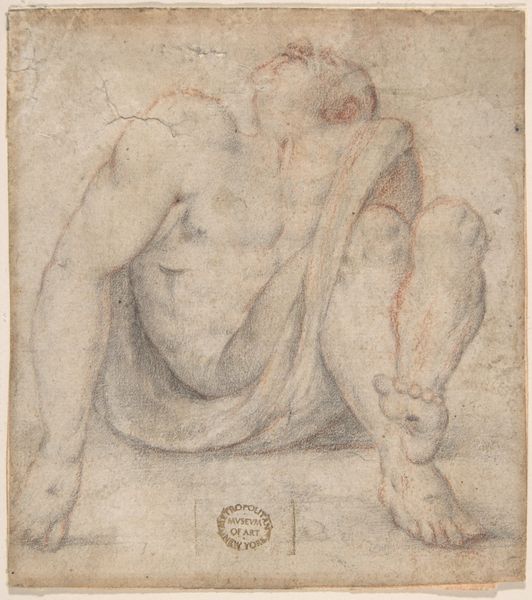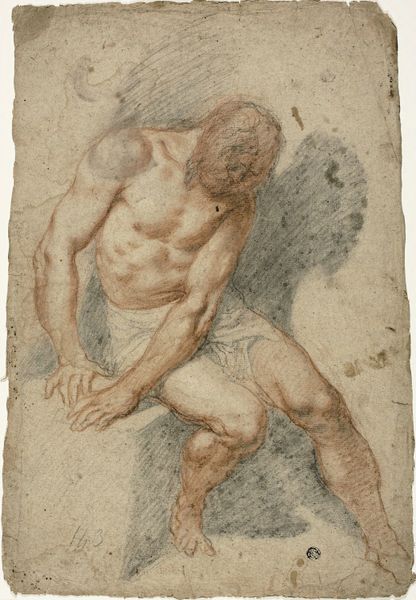
drawing, paper, pencil
#
portrait
#
drawing
#
mannerism
#
figuration
#
paper
#
pencil
#
nude
Dimensions: height 425 mm, width 286 mm
Copyright: Rijks Museum: Open Domain
Editor: This is "Nude Study of a Man Turned to the Right" by Pietro Sorri, made with pencil on paper sometime between 1609 and 1614. The red chalk gives it a warm, almost intimate feel, but the pose is also slightly awkward, unfinished. What do you see in this piece, looking at it through the lens of its time? Curator: It's important to consider the context of male nudes during the Mannerist period. The idealized male form was often a site of power, but also vulnerability. Does this study reinforce or challenge the dominant representation of masculinity at the time? Look at the unfinished quality, for example. How does it speak to ideas of perfection and representation, gendered norms, and class hierarchies? Editor: I hadn't really thought about the unfinished quality as a statement. I was more focused on what *is* there—the muscles are very defined, but you're right, the overall effect isn't heroic. It's more... human. Curator: Exactly! And what does “human” mean in this context? Is it just about anatomical accuracy, or is there something else going on? Consider the historical function of drawings, they can be preparatory works for paintings or independent studies. How might Sorri's intentions shift our reading? What do we learn from this piece about body image? Editor: So, if it’s preparatory, could it be critiquing the heroic ideal by showing the 'real' behind the image? A study of the humanity that's often erased by grand narratives? I never considered the role the image had and it helps recontextualize everything I believed it meant! Curator: Precisely. Art constantly questions and subverts, mirroring and critiquing social expectations, providing tools to deconstruct and transform social and power structures. By bringing contemporary theoretical frameworks, like feminism or critical race theory, to historical works like this, we see how art continues to speak to present struggles for liberation and equity.
Comments
No comments
Be the first to comment and join the conversation on the ultimate creative platform.
